Africa’s big cats are without a doubt, one of the continent’s biggest attractions. Tourists and wildlife lovers flock from all around the world to view these majestic cats in the wild in national parks like The Serengeti or Kruger National Park.
The lion and the leopard are part of Africa’s famous big five and the cheetah is the fastest land mammal on earth.
That’s quite a big shadow for the other wild cats of Africa to live in and it’s no surprise that there are actually seven other species, and you probably didn’t even know it!
Not as large or charismatic as their big cat cousins, most of these small/medium wild cats are elusive and endangered, so if you haven’t heard of them, don’t be too hard on yourself!
They are still among the most beautiful of all the wild cats of Africa and a sighting in the wild is always incredibly special.
Here are the seven lesser-known wild cats of Africa:
1. Caracal
One of Africa’s medium sized wild cats, the caracal is extremely elusive and hard to spot in the wild, but out of all the cats on this list, it might actually be the easiest. Known as the ‘rooikat’or red cat in Afrikaans (a native language of southern Africa) the caracal is found in the savannah and woodland regions of sub-Saharan Africa and sightings are fairly common in Kruger National Park and the Masai Mara. The caracal is also found in semi-desert areas in the Middle East and across the Indian subcontinent.
Caracals are the largest of the ‘small’ wild cats of Africa and are characterised by a short, tawny red coat and long tufts of black hair on the tips of their ears. The name Caracal is actually derived from a Turkish word meaning ‘black ear’. Adult males can grow to around 80 centimetres (2.5ft) in length with a shoulder height of between 40 and 50 centimetres.
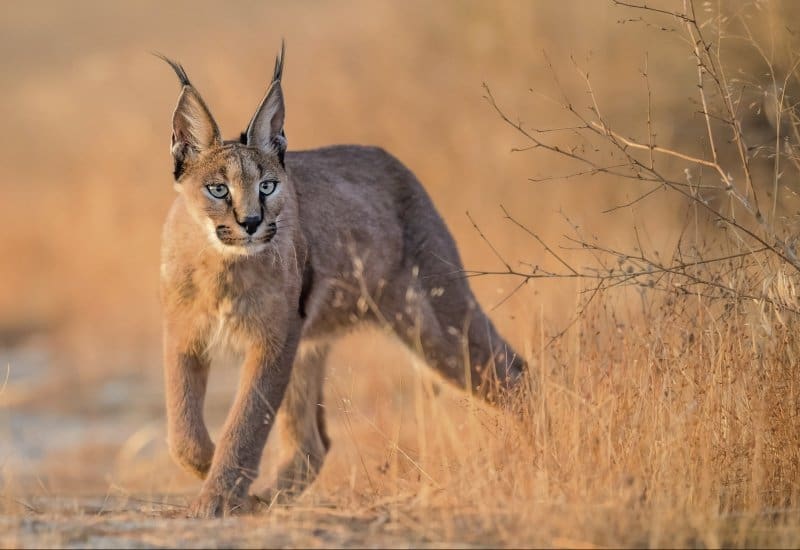
They are incredibly agile and extraordinary hunters, able to climb trees and leap over 3 metres (10 ft) in the air to catch birds in mid-flight. They have also been known to take down small antelope, and will do so when the perfect opportunity arises. However birds, rodents and small mammals make up the majority of their diet.
Caracals are primarily nocturnal and elusive which makes them difficult to spot in the bush.
Exact numbers in the wild are unknown and caracals are classified as ‘least concern’ on the IUCN Red List, although there are certain regions throughout its natural range where the species is considered to be endangered.
2. Serval
Slightly taller and more slender than its ‘red’ cousins, the Serval is graceful cat found across the open grasslands ofsouthern Africa. There are eighteen known subspecies, with a small population still remaining in Morocco.
Thanks to their beautiful black-spotted coat, servals are often mistaken for cheetah at first glance, despite being far smaller. In comparison to the big cats of africa, servals are considered to be a medium-sized cat, with an average shoulder height of 60 centimeters (2ft) and a weighing around 18kg (39lbs).
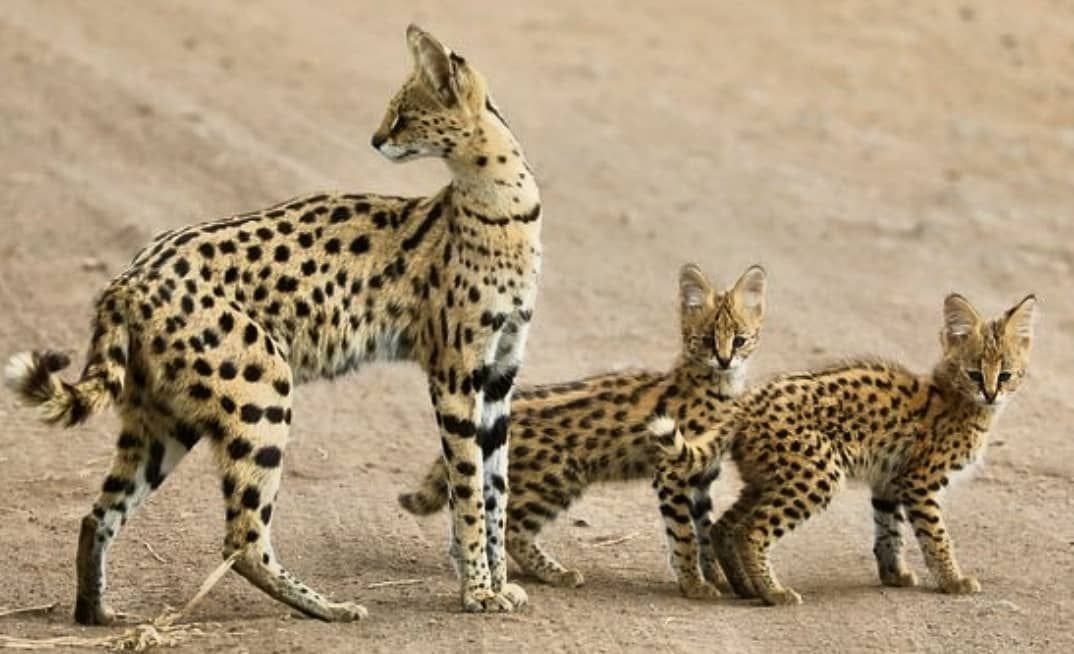
The serval’s appearance is characterised by a small head with oversized ears and what are proportionately, the longest legs of any wild cat. Their large ears provide them with an exceptional hearing ability which allows them to point out the tiniest of rustles made by rodents in long grass. They then use their long legs to pounce on their unsuspecting prey from heights of over 2 meters (6.7ft). This is a serval’s preferred method of hunting and they have been known to lie motionless for hours, waiting for the perfect opportunity.
Servals are active both during the day and under the cover of night, but are much easier to spot during the day in areas with plenty of tall grass.
The total size of serval population of this is unknown, but their numbers are believed to be stable, and the IUCN Red List classifies them as being of ‘least concern’.
3. African Wildcat
An ancestor of today’s domestic cats, African Wildcats are often mistaken for their domestic counterparts, and those lucky enough to spot one in the wild would be forgiven for thinking that Garfield has strayed a little too far from home. Although with a great deal of difficulty, African Wildcats can be distinguished by their slightly longer, banded legs and reddish ear colouration.
The similarity in size and appearance as well as overall genetic similarity, means that domestic cats are one of the greatest threats to the African wildcat population as interbreeding is very common and results in pollution of the gene pool.
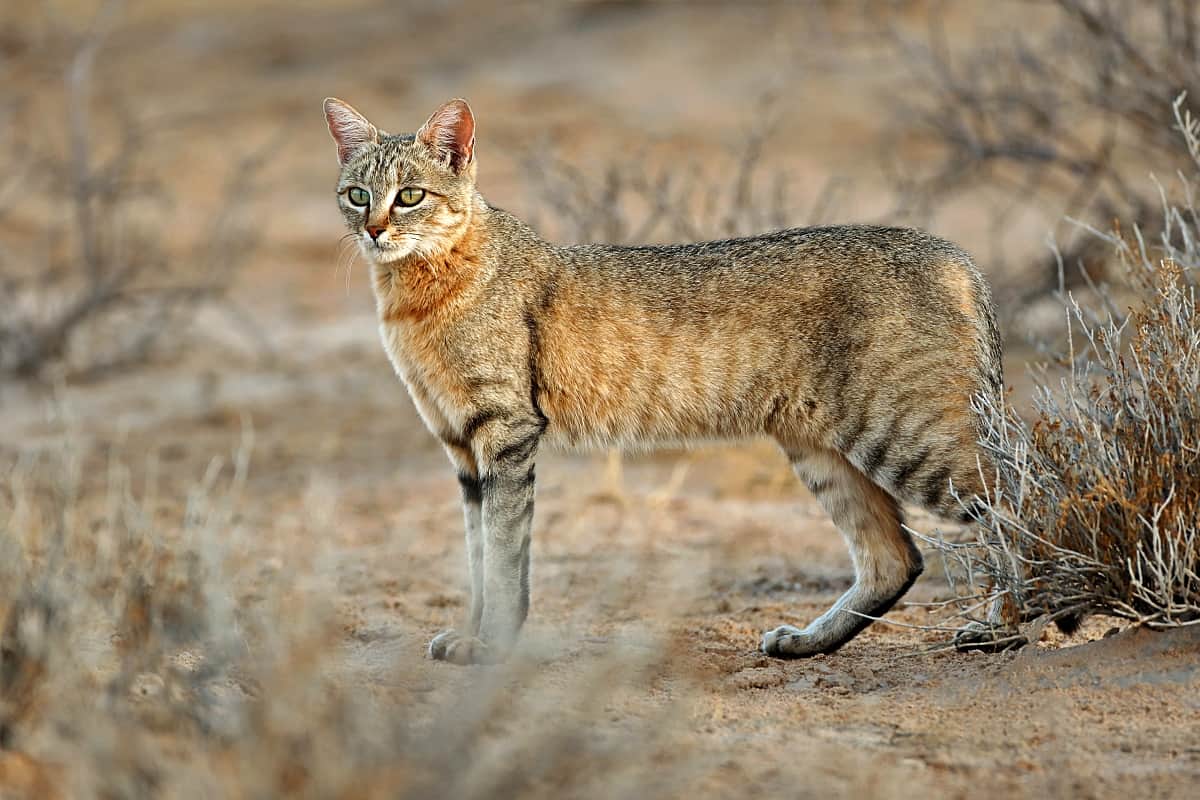
They are found all across Africa and at the edge of the Arabian Peninsula and can survive in a wide range of habitats, generally preferring hilly areas and rocky outcrops. These wild felines are primarily nocturnal and hunt under the cover of night, using stalking tactics to hunt rodents, birds and small reptiles.
The African wildcat has only recently been recognised as a species on its own as it was originally considered a subspecies of the European wildcat. The population has not yet been assessed as a species in its own right and when done, we may see a shift from its current IUCN Red List status of ‘least concern’.
4. African Golden Cat
Even among the most knowledgable of wildlife enthusiasts, very few are aware of the existence of the African Golden Cat, and even fewer have been lucky enough to actuallysee one in the wild.
The African Golden Cat is a close relative of the Caracal and is endemic to the tropical rainforests of Central and West Africa. Their typical range is from the Central African Republic down to Northern Angola. These wild cats are solidly built, with coats varying in colour from reddish brown to a dark grey. Some individuals have spots all over while others tend to only be spotted on their bellies and/or inner legs.

African Golden Cats were photographed in the wild for the first time in 2002, and because of this, very little is known about them in relation to the other wild cats of Africa. Researchers are currently working on increasing the current information available in order to learn more about the species’ distribution and ecology. As these cats are a very shy and elusive species, hidden camera traps are the most effective way of gaining information about their behaviour.
This medium-sized predator primarily seeks out small prey items like: rodents, tree hyrax and birds but have also been known to hunt small primates, shown in this camera trap footage caught in Uganda, showing an African Golden Cat hunting a red colobus monkey.
Bushmeat poaching and habitat loss are the main threats facing golden cats and they’re currently classified as ‘vulnerable’ on the IUCN Red List.
5. Jungle Cat
The Jungle Cat, also know as the reed or swamp cat, is a long-legged species characterised by a distinctive white muzzle with large, pointy ears and a sandy brown coat. Along with the African population, these small felines are widespread throughout the Middle East, China, Southeast Asia and the Indian subcontinent. In Africa they are only found in wetland regions of Egypt, primarily along the Nile Delta.
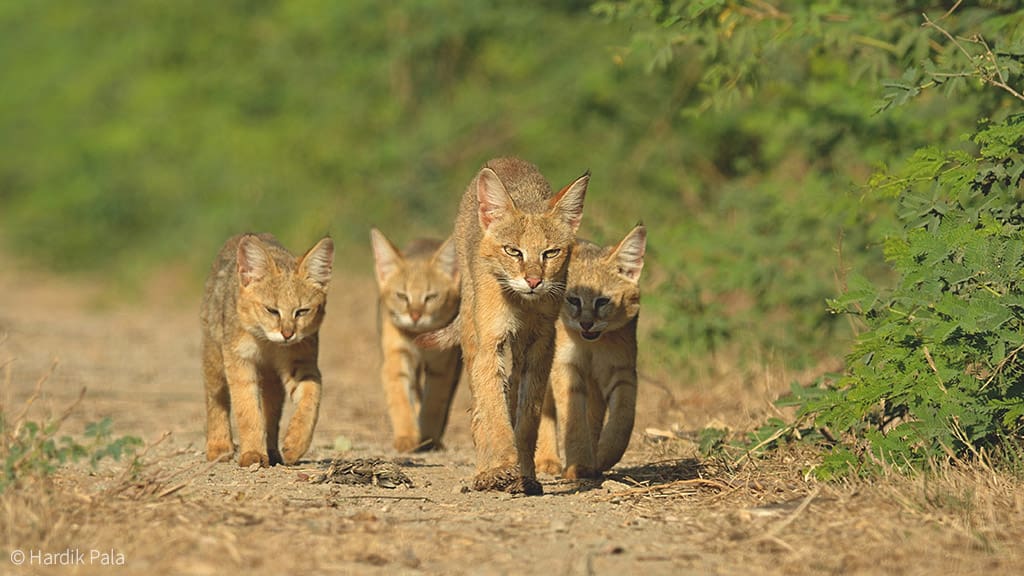
Contrary to what their name suggests, Jungle Cats actually prefer swamps and wetlands and are known to actively avoid jungles on woodlands. These diurnal predators hunt small rodents, birds, reptiles and amphibians that frequent the marshy terrain.
Despite being notoriously difficult to tame, jungle cat mummies have been found in ancient tombs of Egyptian pharaohs,suggesting that they may have once been domesticated and used to help control rodent populations.
The jungle cat is currently listed as ‘least concern’ on the IUCN Red List.
6. Sand Cat
The small desert-dwelling Sand Cat is found across North Africa as well as Southwest and Central Asia. They are the only wild cat species to inhabit true desert areas – well adapted to handle the extremes of the harsh terrain – both from a lack of water point of view and in withstanding large temperature fluctuations. The African subspecies is slightly smaller than their Asian cousins and also wears a slightly yellower coat.
The sand cat is a small species with an average shoulder height of 30 centimetres (12 ft) and its defining features include a wide, flat head with short legs and oversized ears.
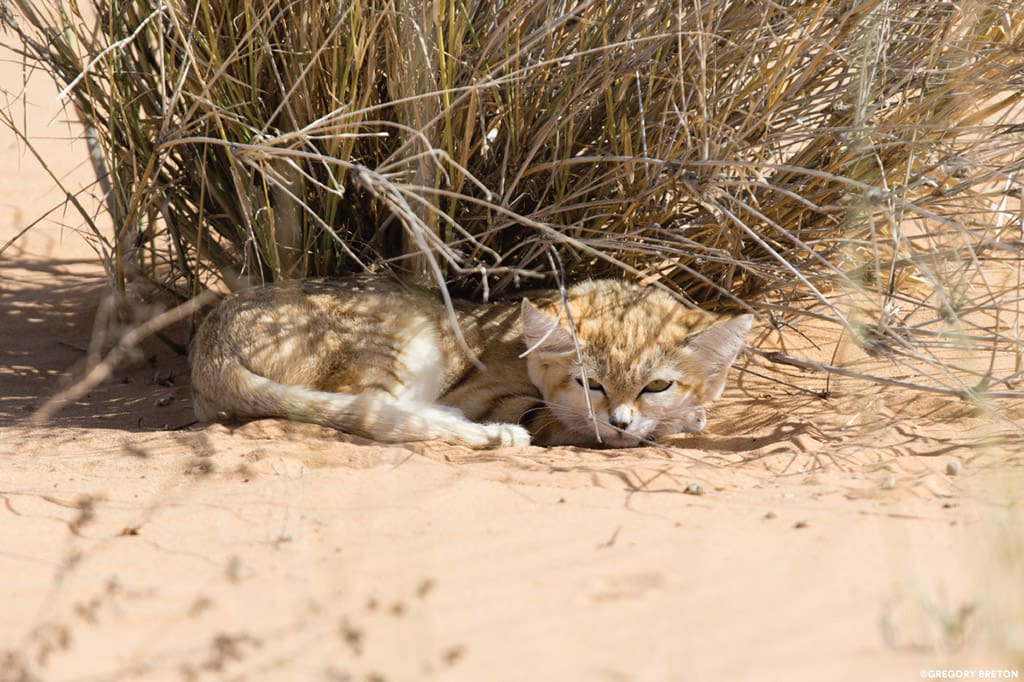
These large ears house an ear canal about twice the size that of a domestic cat and their hearing is roughly five times better. This combined with the highest bite force quotient of any wild cat species makes the sand cat an exceptionally successful hunter. They generally prey on small rodents, and desert dwelling reptiles.
Pale, sandy coloured fur means they camouflage perfectly with the desert sand and the undersides of their paws are covered with thick fur to protect them from the blazing hot sand. Sand cats can survive temperatures ranging from −5 °C to 52 °C, and are known to seek shelter from the weather in the burrows made by other animals.
Though listed as of ‘least concern’ on the IUCN Red List these wild cats are secretive and very rarely seen.
7. Black-footed Cat
The smallest living wild cat in Africa is the Black-footed Cat, a species endemic to southern Africa where it lives in semi-arid regions like savannahs, the karoo semi-desert and grassland habitats, primarily in South Africa and Namibia.
Also known as the ‘small-spotted cat’ these tiny predators are said to be themost successful huntersout of all the wild cats of Africa and a single cat can consume over 3,000 rodents a year. All this despite growing to a shoulder height of 25 centimetres (10 inches) and weighing no more than 2 kilograms (4.5lbs).
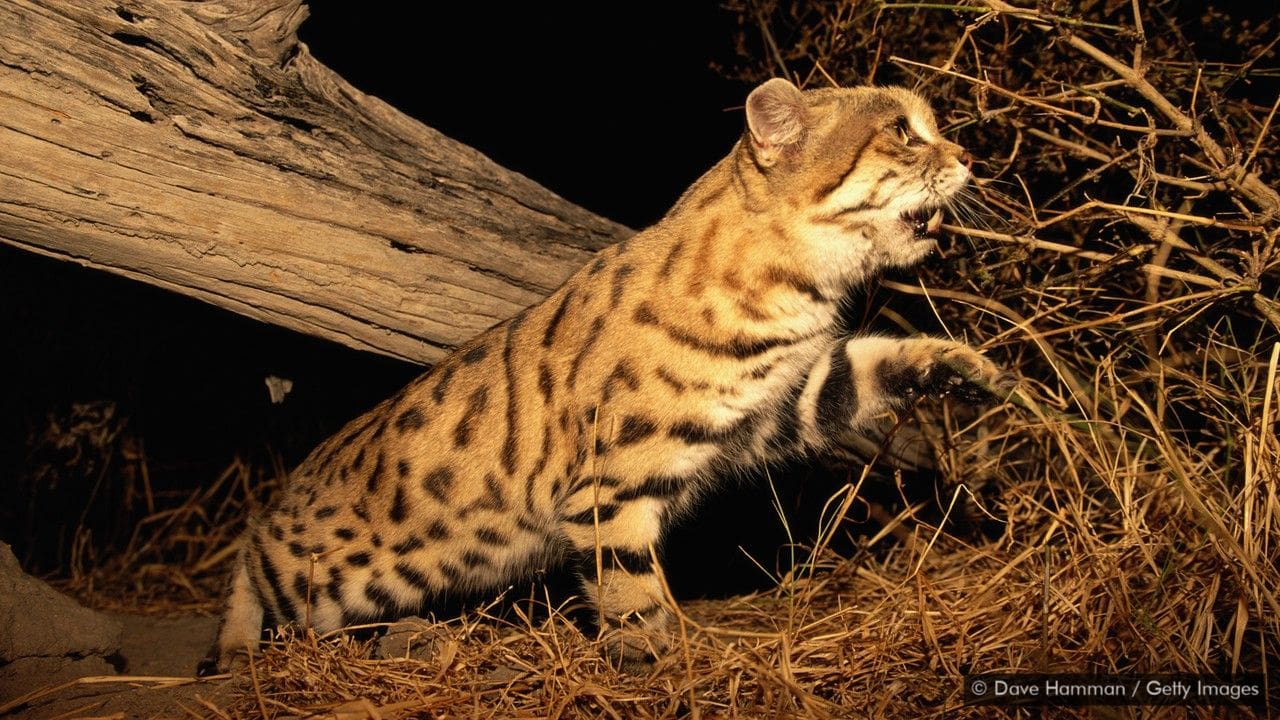
A stocky built cat with large eyes and rounded ears, the black-footed cat has tawny-brown fur dotted with bold black spots. Their diets consists of rodents, birds and small hares and their method of hunting is a stalk and pounce. Unlike other cat species, they are poor climbers and spend their days sleeping in abandoned burrows made by other animals, this combined with their nocturnal nature means that these cats are very rarely seen.
While it is difficult for researchers to estimate the exact number of black-footed cats living in the wild, it is believed that there are less than 10,000 mature individuals and that the population is facing a steady decline. Bushmeat poaching and road traffic accidents are the main threats facing this species and they are currently listed as ‘vulnerable’ on the IUCN Red List.
This article was first published by Wildest on 18 June 2020. Lead Image: © Giovanni Frescura.
What you can do
Support ‘Fighting for Wildlife’ by donating as little as $1 – It only takes a minute. Thank you.
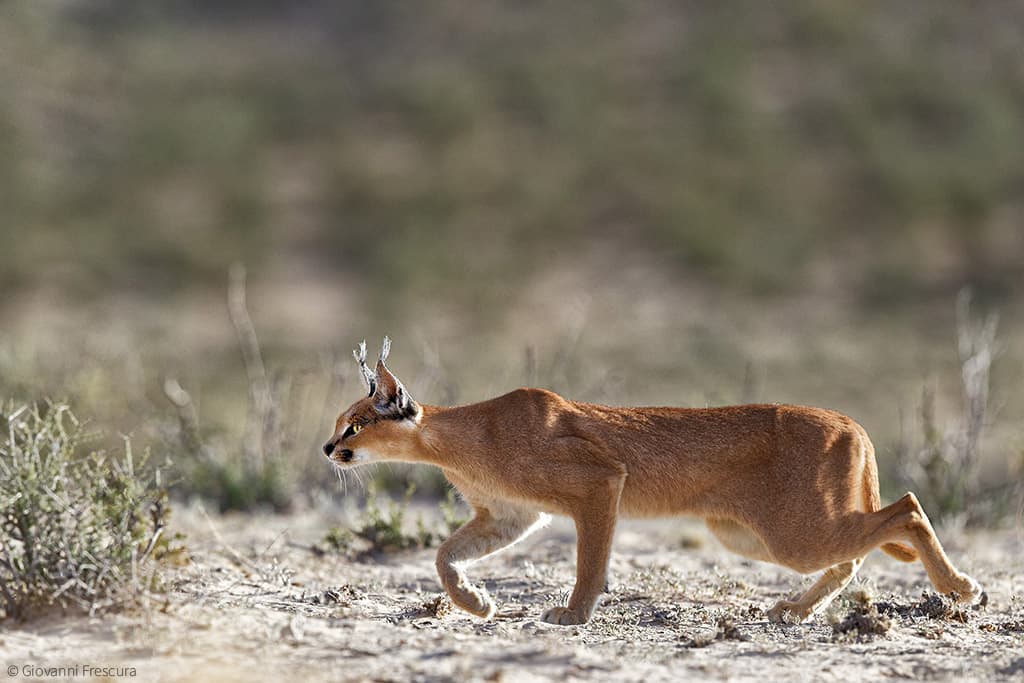
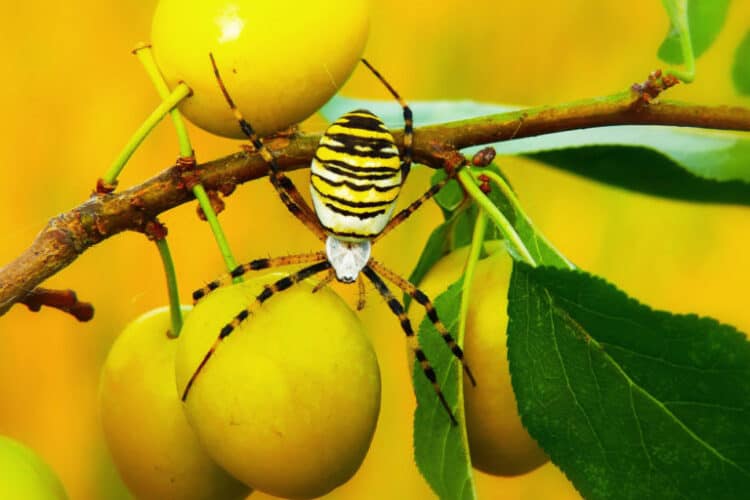



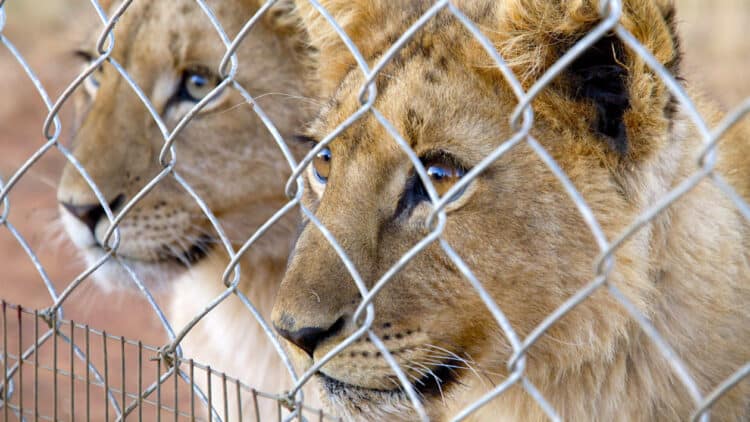
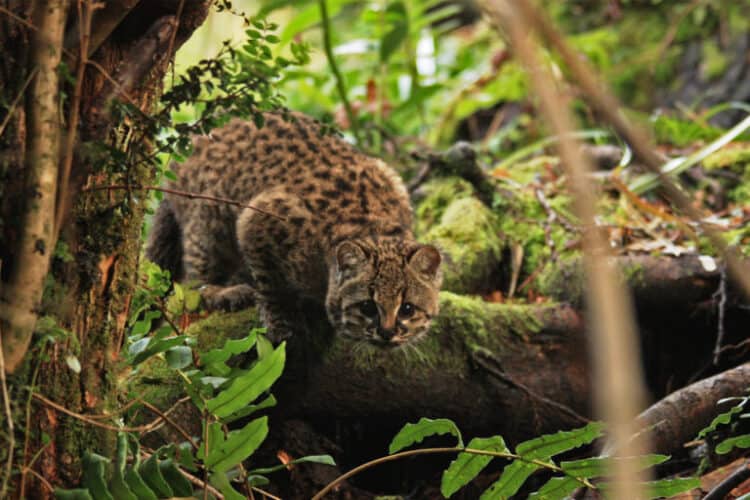
Leave a Reply